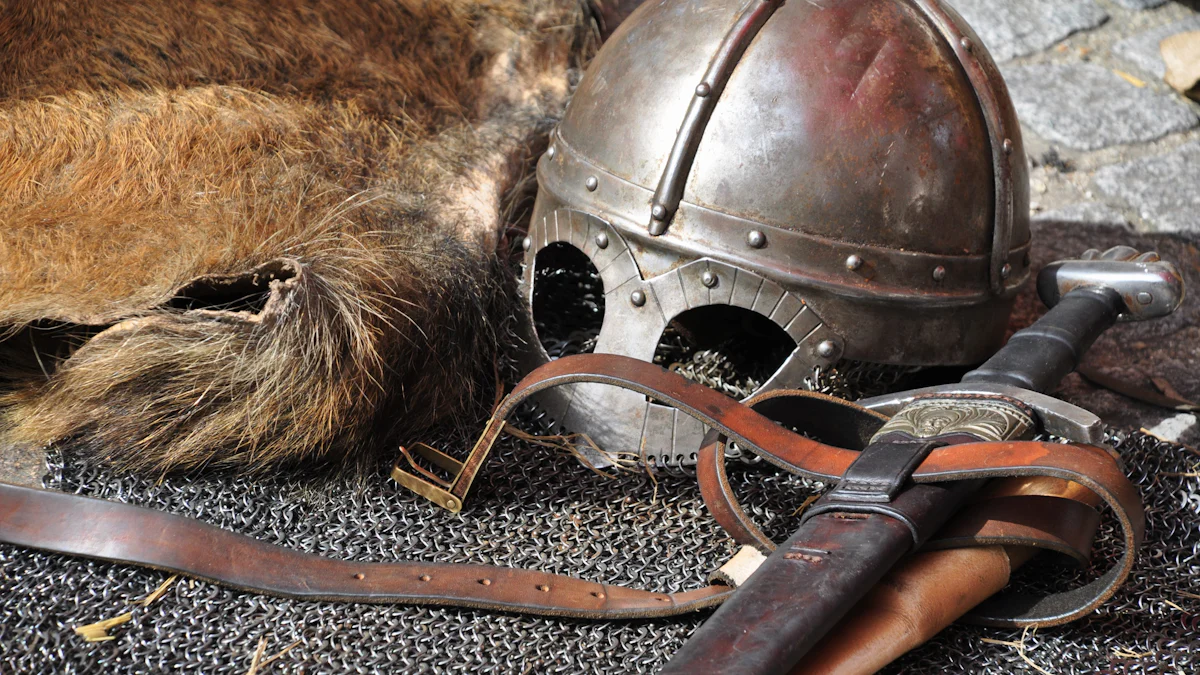
Ancient hand tools played a crucial role in shaping human history. These tools enabled early humans to hunt, build shelters, and create art. Understanding the evolution of these tools provides insights into human ingenuity and adaptation. The historical development of tools reveals the progression from simple stone implements to sophisticated metal instruments. This exploration highlights the cultural and technological advancements achieved over millennia. Ancient hand tools not only facilitated survival but also laid the foundation for modern craftsmanship.
The Dawn of Tool Use

Prehistoric Tools
Stone Age Implements
The earliest known tools date back to 3.3 million years ago. These tools, made from sharpened stones, played a crucial role in early human survival. Early humans used chipped-away stones for cutting and scraping. This innovation marked the beginning of tool use in human history. The Oldowan tools, invented during the Paleolithic era, represent some of the first stone implements. These tools enabled early humans to process food and craft basic items.
Early Human Innovation
Early humans demonstrated remarkable innovation with the development of tools. The introduction of axes around 8000 BCE marked a significant advancement. Initially, sharpened reindeer antlers served as axes. Over time, humans began using copper, bronze, and iron to create more effective tools. These advancements allowed humans to adapt to their environments more efficiently. The Acheulean handaxes, which emerged around 1.76 million years ago, showcased further sophistication in tool technology. These large cutting tools provided greater utility for various tasks.
The Bronze Age
Introduction of Metal Tools
The Bronze Age marked a pivotal moment in tool development. Humans began casting copper and tin alloys to create metal tools. This innovation resulted in sharper and harder tools compared to stone predecessors. Bronze axes became a staple during this period. These axes proved more durable and effective for farming and construction. The transition to metal tools signified a leap in technological progress.
Impact on Societal Development
The introduction of metal tools had a profound impact on societal development. Communities could now engage in more complex agricultural practices. The efficiency of bronze tools facilitated the cultivation of larger areas of land. This led to increased food production and population growth. Societies experienced significant changes in social structures and economic activities. The advancements in tool-making during the Bronze Age laid the groundwork for future civilizations.
The Iron Age and Beyond

Advancements in Tool Making
Iron Tools and Their Uses
The Iron Age brought significant advancements in ancient hand tools. Iron replaced bronze as the primary material for toolmaking. This transition marked a new era in technological development. Iron tools proved more durable and efficient than their bronze counterparts. Farmers used iron plows to cultivate land more effectively. Blacksmiths crafted iron axes and saws for construction purposes. Artisans utilized iron chisels for detailed carvings. The Hittites played a crucial role in early iron production. Some historians believe the Hittites were the first to make steel. This innovation further enhanced the strength of ancient hand tools.
Technological Progression
The progression from bronze to iron represented a major leap in technology. Iron tools allowed for more complex societal structures. Communities could expand agricultural activities with increased efficiency. The Stone–Bronze–Iron sequence highlights this technological evolution. Each stage brought about new possibilities for human development. Iron tools facilitated the construction of larger and more permanent settlements. This period saw the rise of fortified cities and advanced infrastructure. The widespread use of iron marked a turning point in human history.
The Role of Tools in Ancient Civilizations
Egyptian and Mesopotamian Tools
Ancient Egypt and Mesopotamia relied heavily on ancient hand tools. Egyptians used iron tools for agriculture and construction. Farmers employed iron sickles to harvest crops efficiently. Builders utilized iron chisels and hammers in monumental architecture. Mesopotamians also embraced iron in their daily lives. Artisans crafted intricate designs using iron implements. Iron tools contributed to the prosperity of these civilizations. The durability of iron ensured long-lasting structures and artifacts.
Tools in Ancient China and India
Ancient China and India made remarkable contributions to tool development. Chinese blacksmiths perfected the art of iron smelting. This expertise led to the creation of superior ancient hand tools. Farmers in China used iron plows to revolutionize agriculture. Indian craftsmen excelled in metalworking techniques. Iron tools played a vital role in the construction of temples and palaces. Both civilizations demonstrated exceptional craftsmanship with iron. These advancements laid the foundation for future innovations in toolmaking.
Medieval to Modern Times
The Renaissance of Tool Making
Innovations in Design and Function
The Renaissance period witnessed remarkable advancements in tool design and function. Artisans began crafting tools with improved ergonomics and efficiency. The use of new materials like steel enhanced tool durability. Leonardo da Vinci contributed to this era with his inventive designs. His sketches included detailed plans for machines and tools. These innovations paved the way for more complex machinery.
Influence on Craftsmanship
Craftsmanship flourished during the Renaissance. Skilled artisans refined their techniques using advanced tools. The precision of these tools allowed for intricate work in various crafts. Metalworking, woodworking, and stone carving saw significant improvements. The Renaissance period emphasized the importance of quality and detail. This focus on craftsmanship set new standards for future generations.
Industrial Revolution and Its Impact
Mass Production of Tools
The Industrial Revolution transformed tool production. Factories began mass-producing tools at an unprecedented scale. This shift increased the availability of tools for various industries. Steam power and mechanization played crucial roles in this transformation. The introduction of assembly lines streamlined production processes. Mass production made tools more affordable and accessible.
Evolution of Tool Materials
The Industrial Revolution also led to advancements in tool materials. Manufacturers experimented with new alloys and composites. Steel became the material of choice for many tools. Its strength and versatility made it ideal for industrial applications. The development of new materials expanded the range of available tools. This evolution enabled more specialized and efficient tool designs.
The historical journey of ancient hand tools showcases their integral role in human progress. Ancient hand tools have consistently driven innovation and adaptation. The evolution from stone to metal tools reflects the advancement of civilization. Ancient hand tools have served various purposes, shaping societies and cultures. Classic hand tools remain relevant today, signifying their enduring importance. The development of ancient hand tools continues to evolve with technological advancements. Future innovations promise to enhance the functionality and efficiency of ancient hand tools. The ongoing evolution highlights the dynamic nature of tool development.
